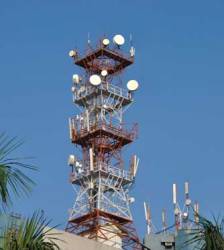(Back to GPS Focus page)
2001
December 1. Deputy Secretary of Defense Paul Wolfowitz expresses resistance to Galileo in a letter to European defense ministers.
December 1. Russia’s system rebuilding project begins with the launch of a modernized GLONASS satellite prototype (GLONASS-M)
2002
November 25. The U.S. Coast Guard moves from Transportation to the newly established Department of Homeland Security.
2004
(Back to GPS Focus page)
2001
December 1. Deputy Secretary of Defense Paul Wolfowitz expresses resistance to Galileo in a letter to European defense ministers.
December 1. Russia’s system rebuilding project begins with the launch of a modernized GLONASS satellite prototype (GLONASS-M)
2002
November 25. The U.S. Coast Guard moves from Transportation to the newly established Department of Homeland Security.
2004
June 26. GPS-Galileo Cooperation agreement is signed by the United States and the European Union.
December 8. President George W. Bush signs National Security Policy Directive on U.S. Space-Based Positioning, Navigation, and Timing.
2005
August. The Defense Science Board GPS Task Force releases report on the future of the Global Positioning System. Former Secretary of Defense and Energy James R. Schlesinger and Robert J. Hermann, Director of the DoD National Reconnaissance Office, are co chairs.
September 26. First modernized GPS Block IIR satellite (IIR-M) with second civil signal L2C is launched.
December 1-2. International Committee on Global Navigation Satellite Systems (ICG) founded with United States membership.
December 28. First Galileo experimental satellite launched. Transmissions begin January 12, 2006.
2006
January 24. National Space-Based Positioning, Navigation, and Timing Executive Committee (PNT ExCom) chartered by Secretary of Defense Donald Rumsfeld and Secretary of Transportation Norman Mineta and co-chaired by their deputies.
– National PNT Coordination Office up and running.
December 16. U.S. Air Force begins transmitting second civil GPS signal, a dataless L2C, following September launch of first IIR-M.
2007
July 26. U.S. and E.U. agree on multiplex binary offset carrier design for common GPS-Galileo civil signal.
September 4. Second ICG meeting creates a Providers Forum. The United States, European Union, Russian Federation, People’s Republic of China, Japan, and India are members.
September 14. New Block 22F satellites will be managed using new digital communications and a new message format for telemetry, tracking, and control (TT&C), the first steps in implementing the, Architecture Evolution Plan (AEP) for the GPS Operational Control Segment
September 18. President eliminates selective availability (SA) from GPS Block III satellites and subsequent generations.
November 21. Next Generation GPS Control Segment (OCX) contracts awarded to two new vendors — Northrop Grumman Corporation and Raytheon.
2008
March 20. First civil U.S. Department of Transportation (DoT) sets aside $7.2 million for GPS improvement in FY2008 as a down payment of a five-year civil contribution of more than $200 million
May 15. GPS III contract signed with prime contractor Lockheed Martin.
October 6. Assistant Secretary of Defense John Grimes signs new GPS Standard Positioning Service (SPS) Performance Standard, the first update since 2001.
October 31. Federal Aviation Administration issues first performance standard for the GPS Wide Area Augmentation System (WAAS).
2009
March 24.After many technical problems and delays, the GPS IIR-20(M) satellite carrying a demonstration payload of the new L5 signal launched.
April 10.The first GPS signal in the L5 frequency band transmits successfully. It will be used for safety of life applications including civil aviation.
Copyright 2009 by Gibbons Media & Research LLC. All rights reserved.





